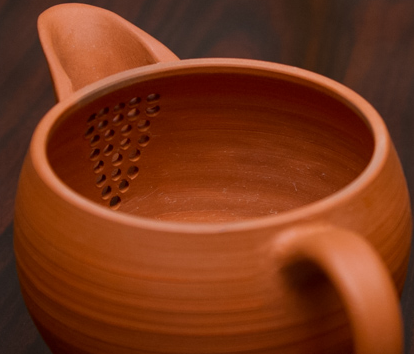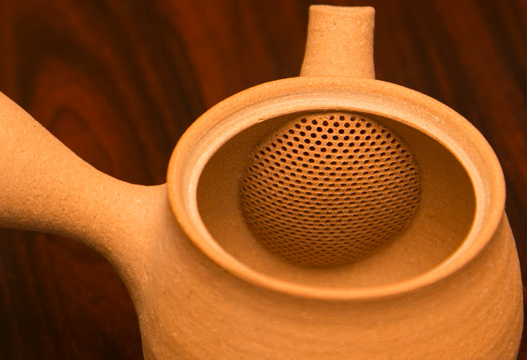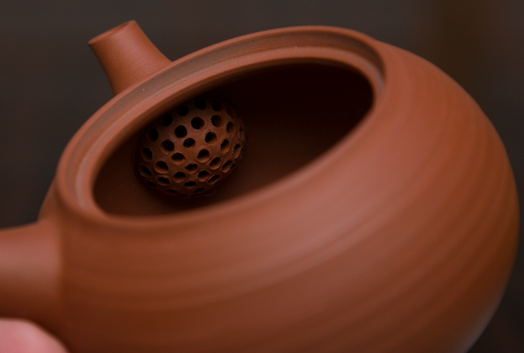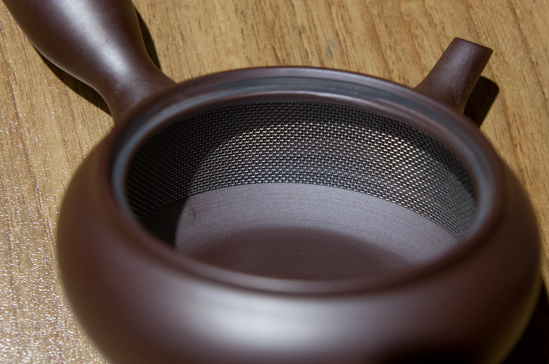Still trying to figure out as to which teapot to buy? Well this is what you’ve got to first decide, which tea leaf you’d like to use? And the most important criteria is the filter of the teapot which should easily strain the tea. Let us sneak into some types of filters and this will certainly be a good guide to select the type of filter based on the type of tea you intend to brew.
1. Direct hole filter
The filter holes were made directly on the inner body of the teapot. As the filter is part of the teapot, the artists have to maintain very high concentration while shaping the filter holes. Furthermore, if any mistake is made to the filter hole, the entire teapot will be ruined. Mainly, Japanese and China teapots (Yixing) of a much more sophisticated molding uses this filter design due to its efficacy in drainage. With this design, we are able to completely drain the tea to its last drop. On the contrary, a tea that consists of finer leaves tends to get stuck onto the filter. For instance, this filter is not practical for brewing the Fukamushi sencha (deep steamed sencha), although it is usable for most sencha. Among this design of filters, the model that comes with more number of holes is prefered.
2. Seramesh filter
Originally, this filter design was developed in Tokoname City. This filter is of a flat and wide shape together with numerous tiny holes on its surface. Despite the filter is made of clay, it is practical to brew tea of mostly tiny leaves like the Fukamushi sencha. Contrarily, this design tends to retain some water as it has less drainage efficiency compared to other types of filter.
3. Bulbous shape filter
The ball shape filter has the features of both the direct hole filter and seramesh, but it’s drainage attribute is better than the seramesh filter and it’s chance of leaves choking in the filter (direct hole design) is reduced. However, if you brew the Fukamushi sencha with leaves that are too dusty, it may get choked at times.
4. Stainless steel mesh filter
The filter is made of a stainless steel mesh that varies in shape. Regardless of the shape, however, this filter performs excellently as any tea is suitable. The water flow is fast enough even for tea with lots of tiny leaves. Though, quite a number of people may think that the stainless steel mesh spoils the taste of tea, nonetheless, the water kettle, water treatment system, tap and many other materials which are made of stainless steel have already contributed to the effect on water even before getting in contact with the teapot. Based on my tasting experience, there is no negative impact with the stainless steel tea strainer. Usually, the stainless steel strainer is used for non-handmade teapots.
You are now ready to make up your mind on which teapot you’d like to buy!
Photo credits & source: hojotea.com









